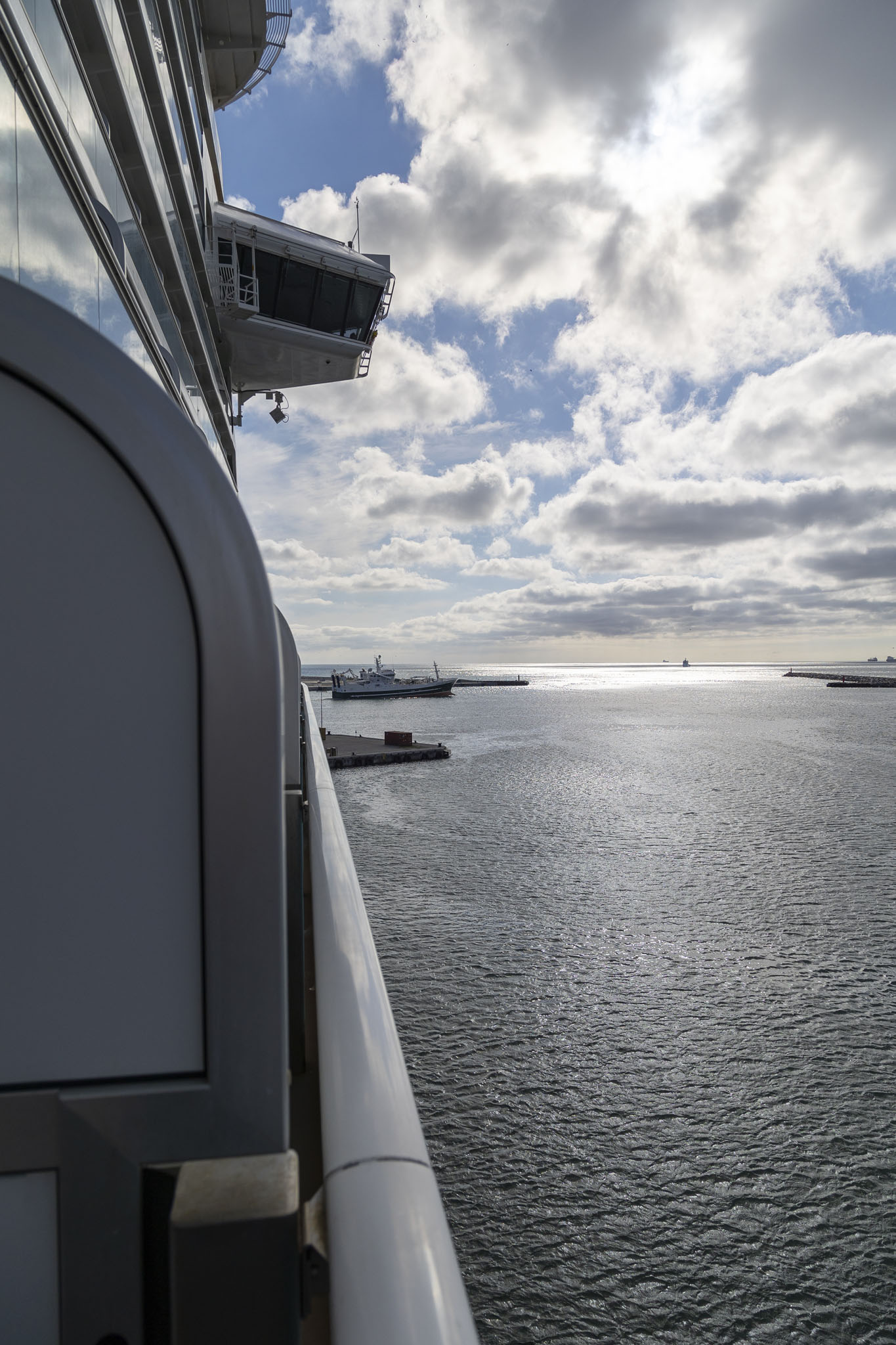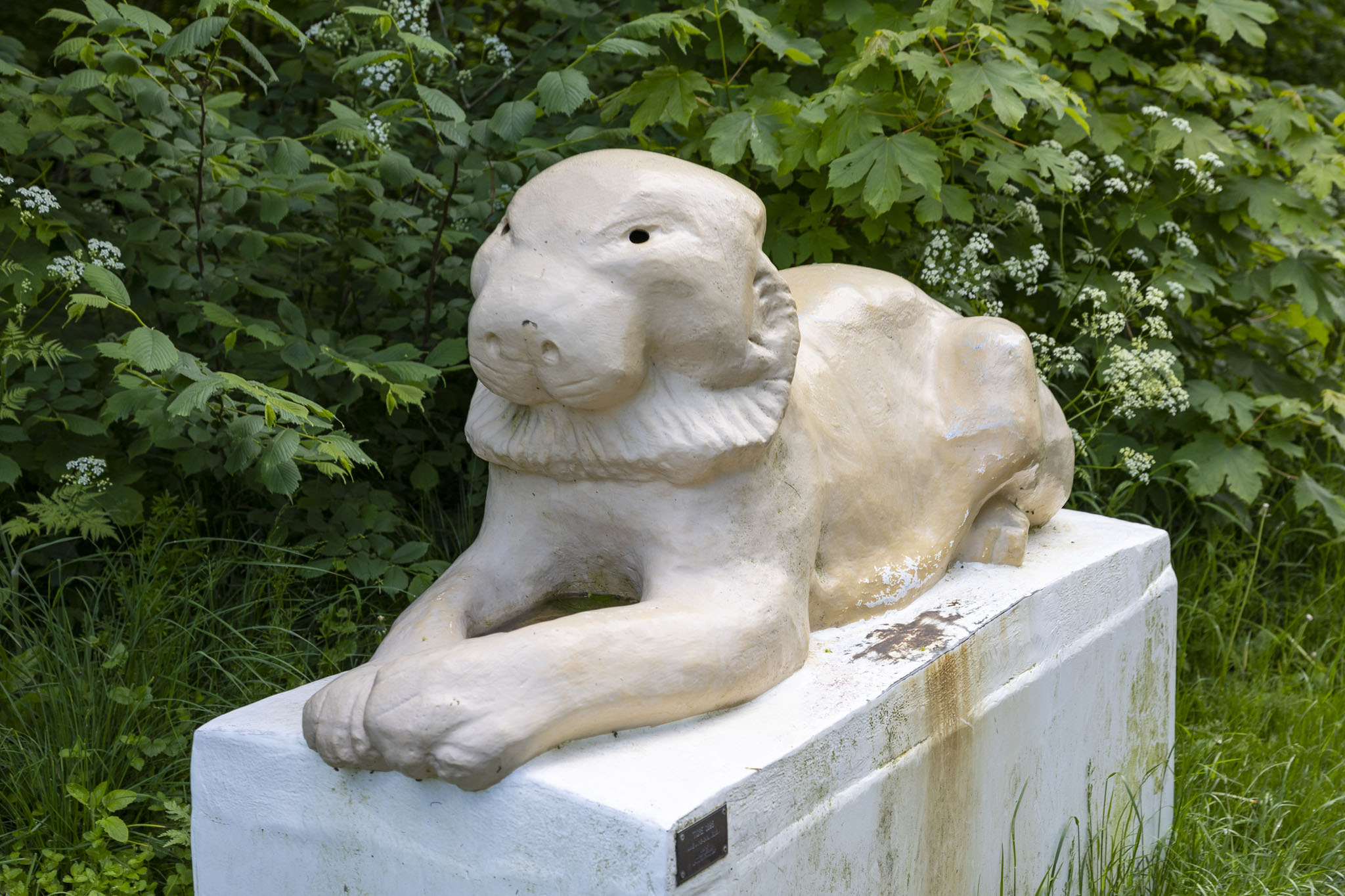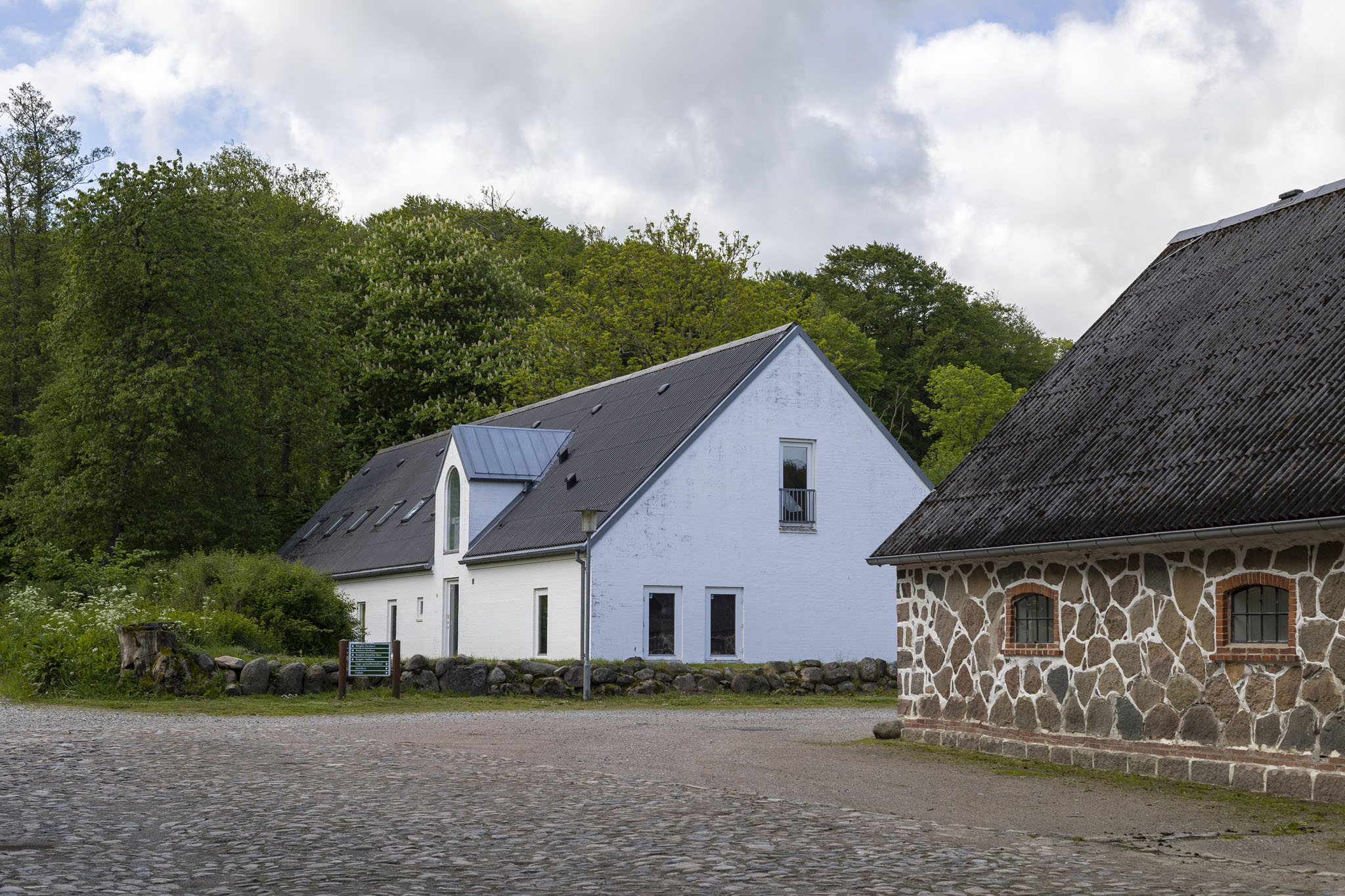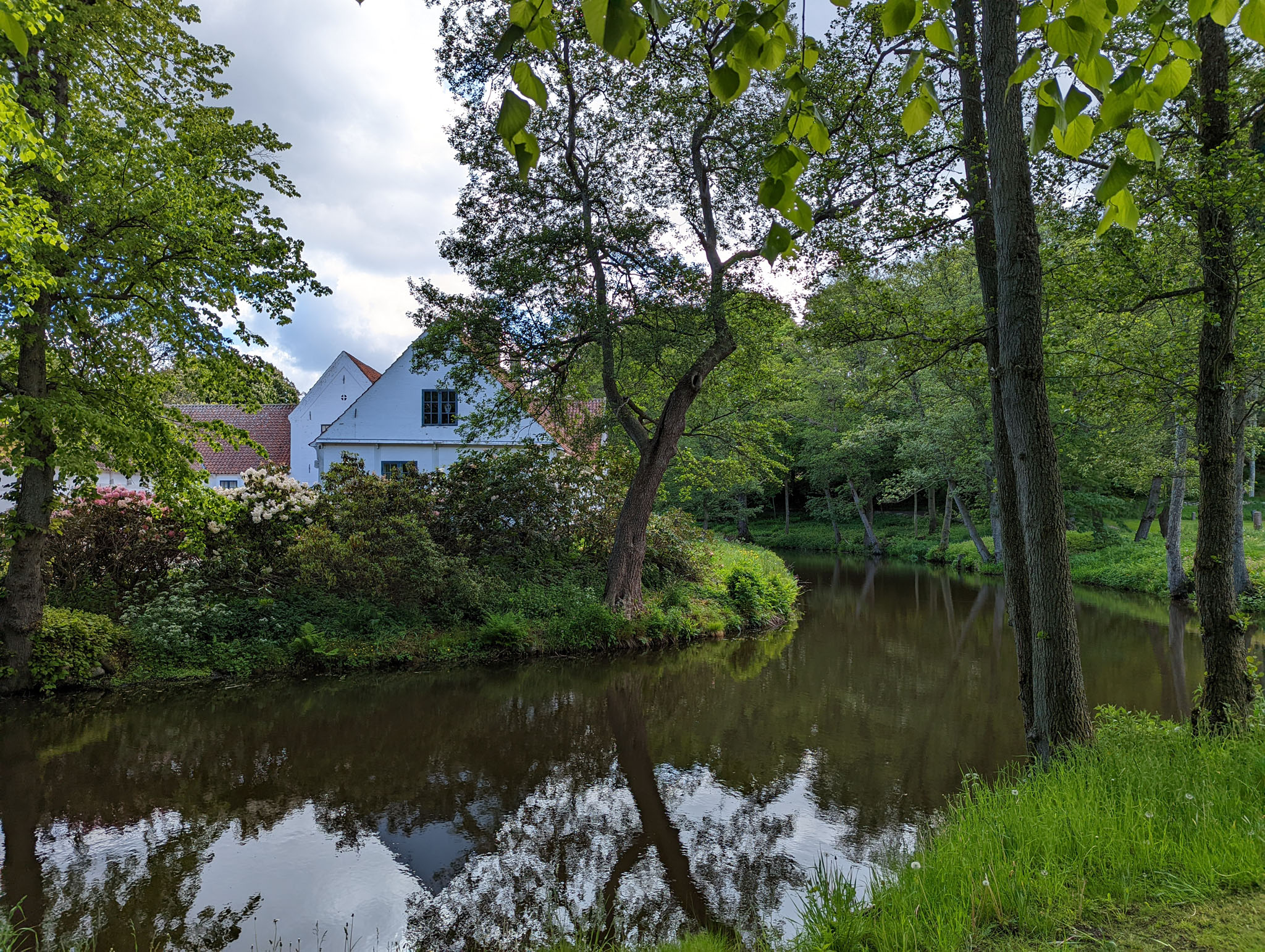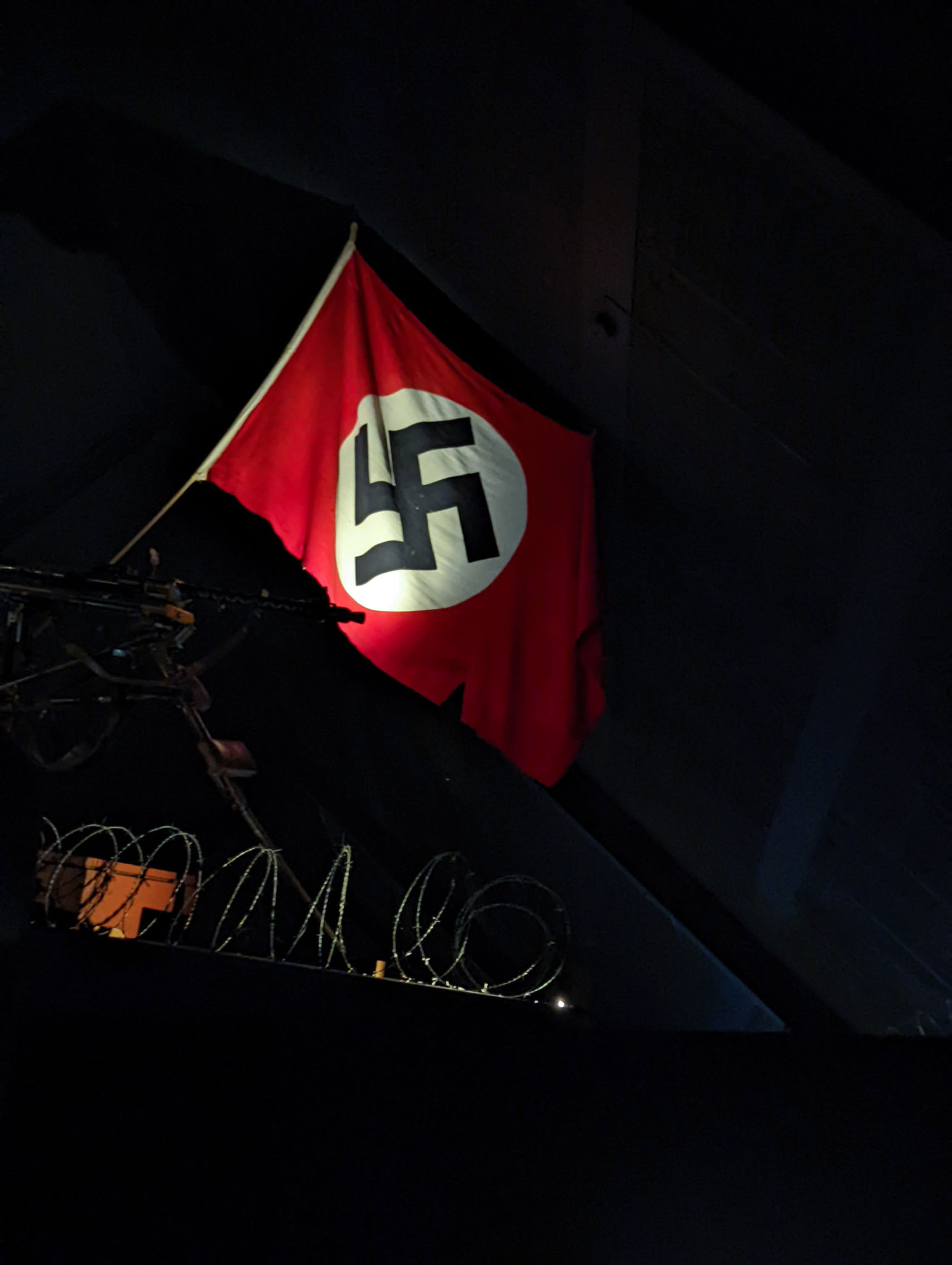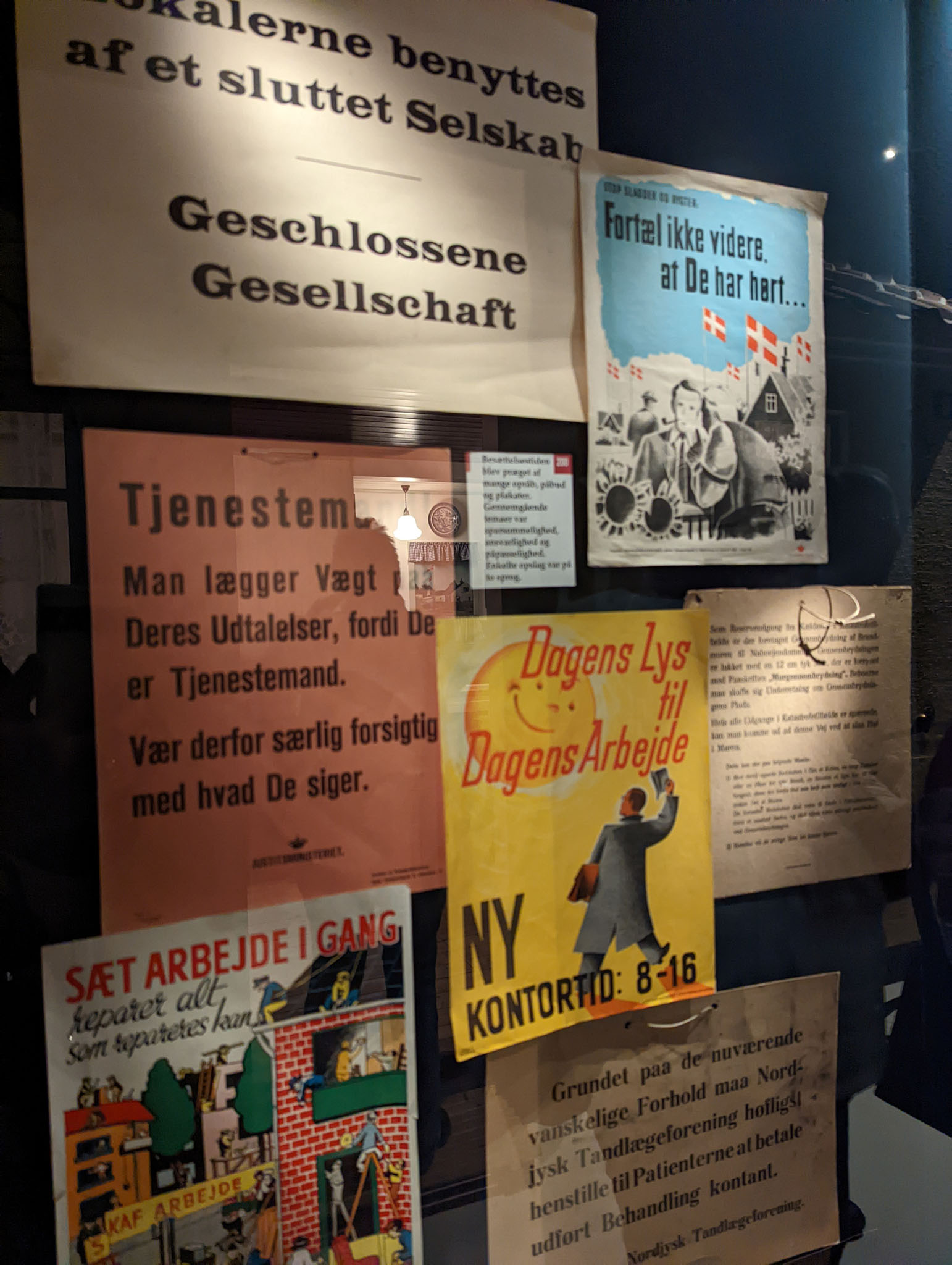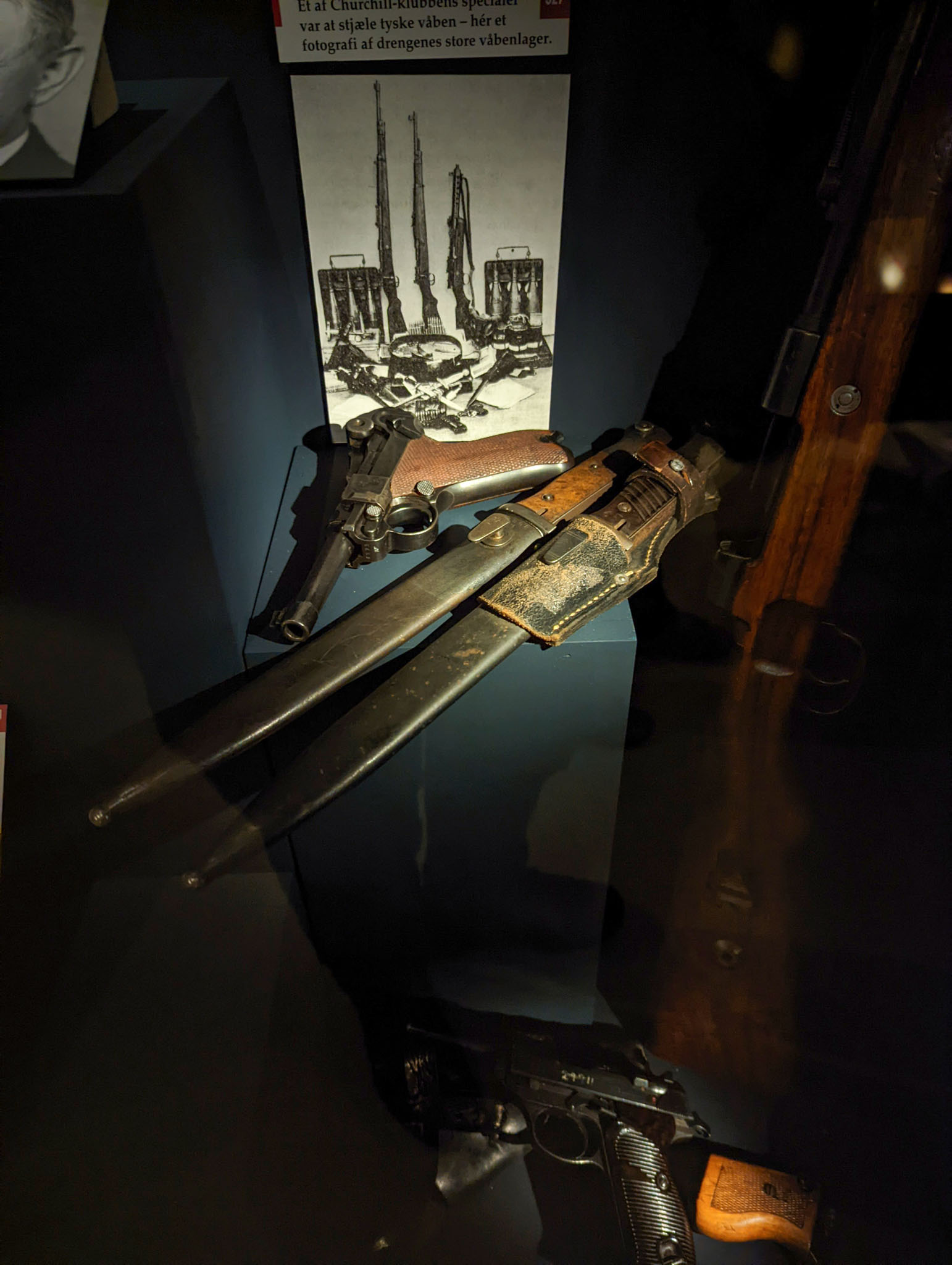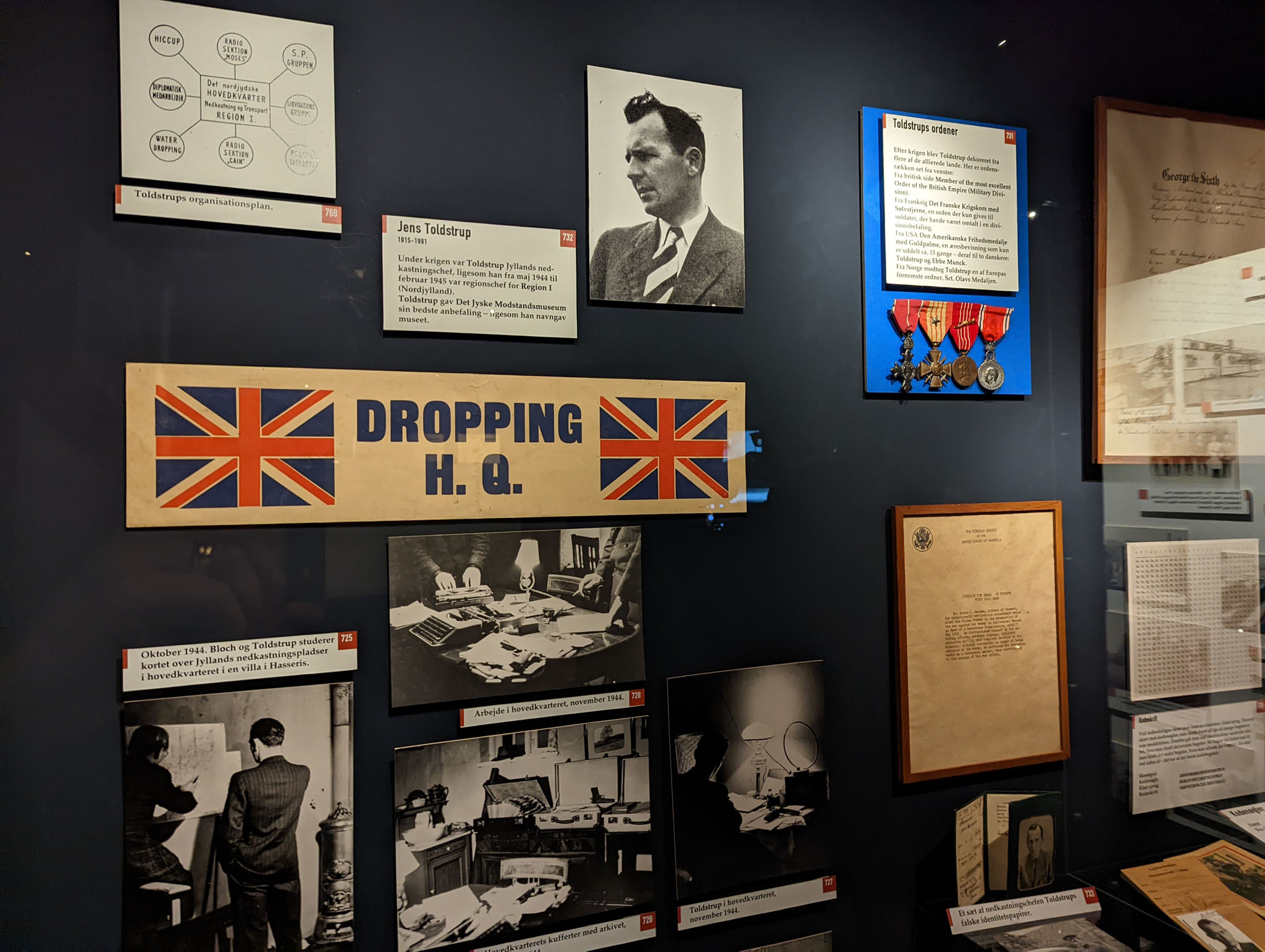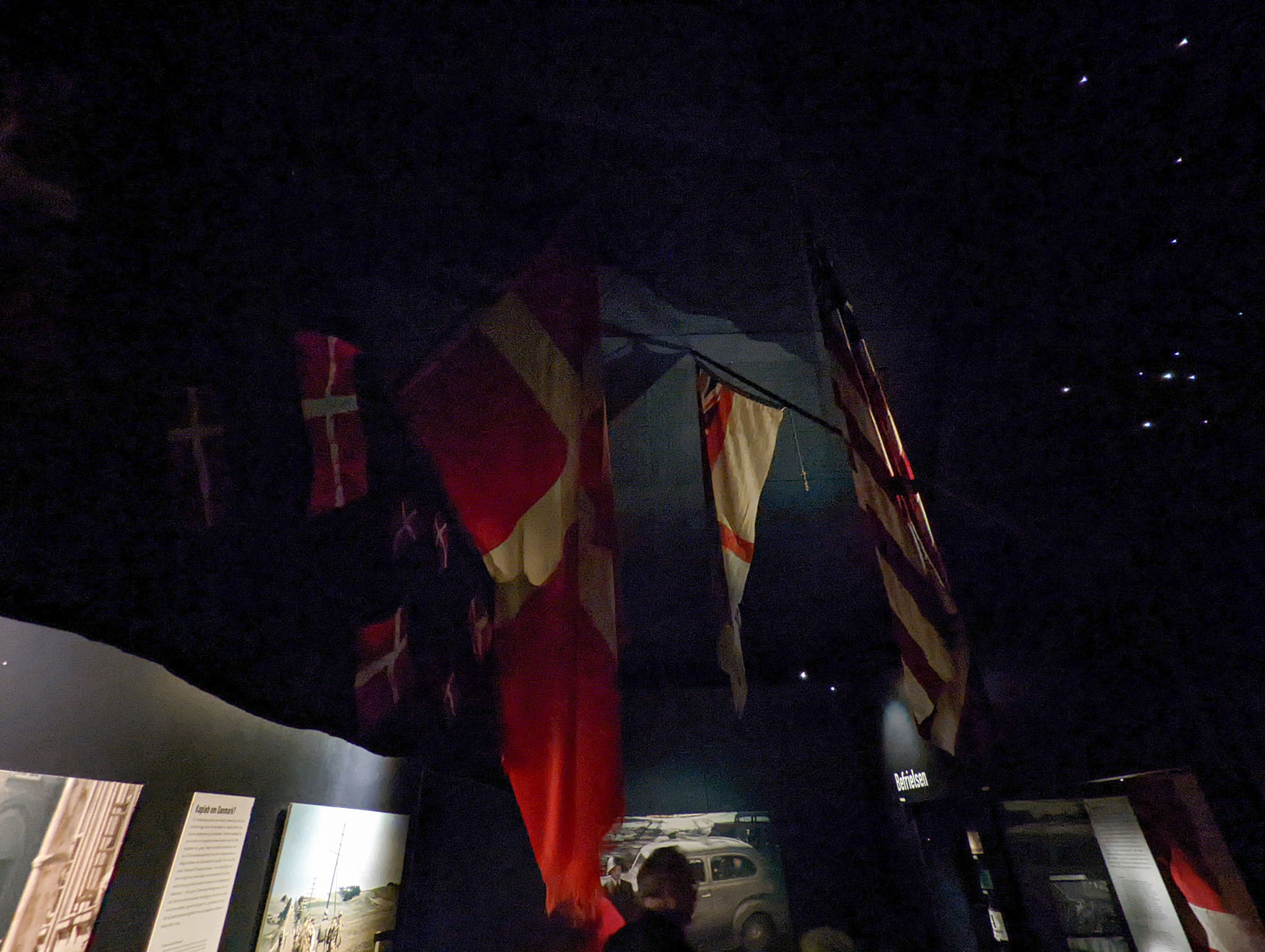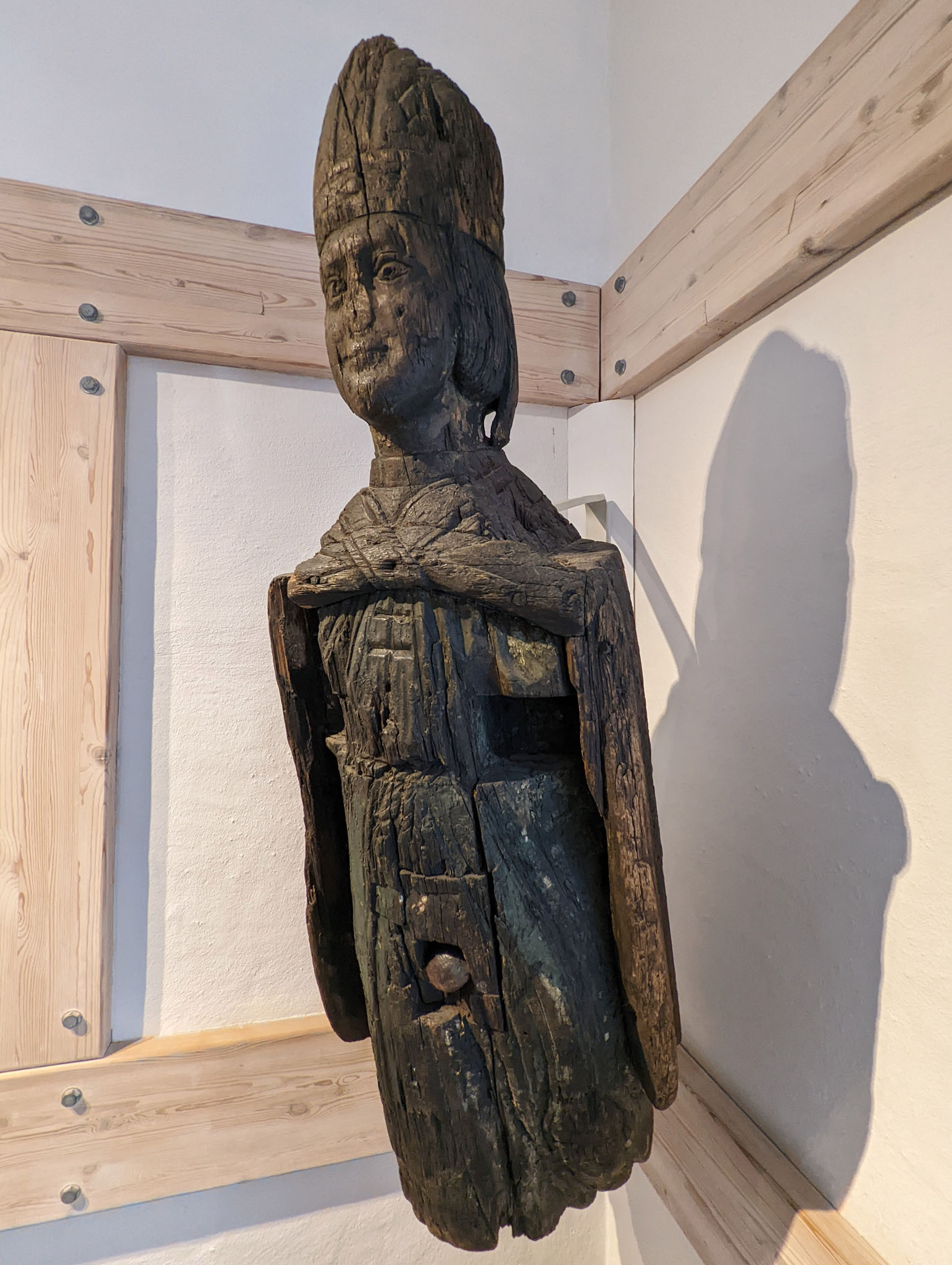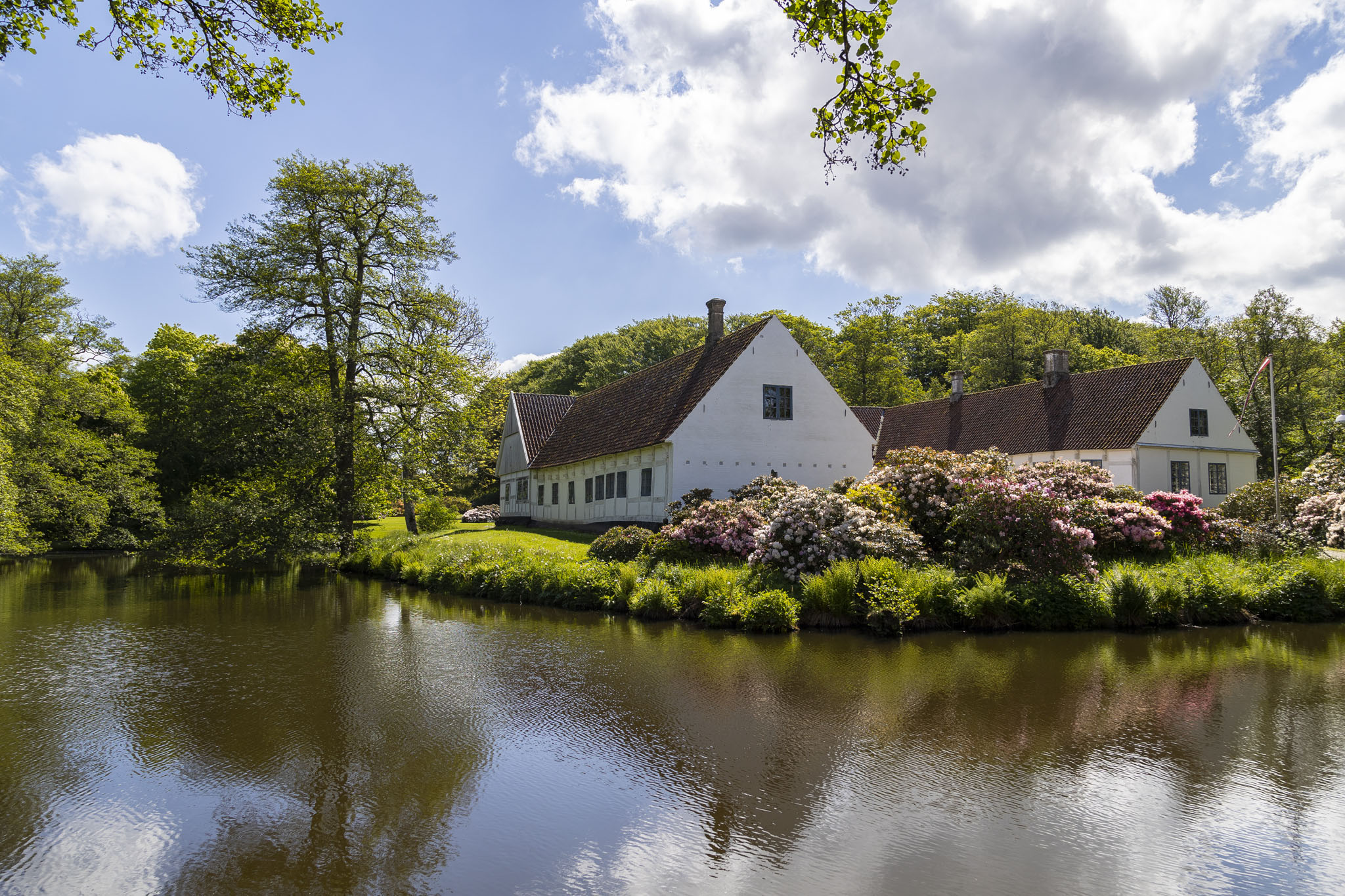The more we cruise, the more we find that some of the smaller, less-well-visited ports leave us with better lasting memories than those that the cruise ships hit on a more regular basis. That would certainly prove to be the point with Skagen in northern Denmark which is where Sky Princess docked the morning after leaving Copenhagen and our longer-than-expected walking tour of the country’s capital.
There will be more about Skagen itself later in this cruise travelogue series, but this and the follow-up post will cover the excursion we took along the coast to the area around Frederikshavn.
First up, just for completeness, a few views from our balcony aboard Sky Princess in the morning. With the direction the ship was facing we didn’t get much of a feel for what Skagen was like until we’d boarded the tour bus and driven through it. Our general feeling even then was that it was small with not a lot to do or see, but we’d come to a completely different conclusion by the end of the day.
Our tour started with a visit to the Coastal Museum of Bangsbo, part of the Nordjyllands Kystmuseum group of museums in this area.
The museum is situated in the grounds of a manor that dates from 1364 but which saw its most interesting period of history at the turn of the twentieth century when it became a hub for Scandinavian artists and writers, including those associated with the Modern Breakthrough movement. The grounds were lovely and peaceful, with the moat surrounding some of the buildings acting as a wonderful mirror for the picturesque location. We’d actually turned up so early that the museum hadn’t opened when we arrived so had more time than anticipated to take in the views.
The overall theme for the tour we’d taken in this part of Denmark was World War II-related so the primary point of this initial visit to the Coastal Museum of Bangsbo was to see the exhibition about the German occupation of northern Denmark with a focus on the resistance movement. Danish resistance during the war was slow to evolve. The Germans had allowed the Danes to mostly govern themselves with some censorship and a ban on trading with allied forces being the only major impacts to general life. As a result, initially there was little in the way of a desire to fight the relatively small occupying force. However, there were those opposed to the Nazis and there were communication channels open to Britain so cells did start to form, initially for spying purposes, then increasingly towards sabotage and more lethal acts towards both the Germans and collaborators in their country. Britain regularly parachuted in people and equipment to assist in the effort.
We’ve seen a fair number of war exhibitions at museums around Europe and we never tire of them; it’s a fascinating part of history and a useful reminder about what you should do when you see a Nazi or see someone expressing support for their position. The Bangsbo museum is well worth a visit to see their collection and read about the Danish resistance.
In the same building there was a space dedicated to Danish seafaring through the ages. This made sense, given it’s a coastal museum, after all. We didn’t really have enough time to give this exhibit any justice but there were some nice models of vessels – and being cruise fans and natives of a naval port city we always like boats and ships in any form – and some interesting figureheads.
The showpiece of the Coastal Museum of Bangsbo gets a building all to itself. This building housed reasonably well-preserved remains of an old ship that at first sight, and given this part of the world, you might imagine is Viking in origin, but it’s actually a little later than that, dated by specialists to 1163. The medieval ship is fourteen and a half metres long and would have traded with Scandinavian and Baltic countries. Its discovery in 1922 in a stream suggests that a natural harbour once existed in the part of Denmark in which it was found.
Our short but interesting visit to the Bangsbo Coastal Museum finished with a walk past the lovely view of the manor grounds once more as we made our way to the bus.
In the next part of this cruise travelogue series covering what we did while docked at Skagen, we’ll be visiting Bangsbo Fort, part of the Atlantic Wall defences constructed by Germany to protect their invaded lands from allied attacks.

